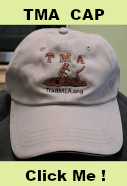Barking off Squirrels is delightful sport, and in my opinion requires a greater degree of accuracy than any other. I first witnessed this manner of procuring Squirrels whilst near the town of Frankfort. The performer was the celebrated Daniel Boone. We walked out together, and followed the rocky margins of the Kentucky River, until we reached a piece of flat land thickly covered with black walnuts, oaks, and hickories. As the general mast was a good one that year, Squirrels were seen gambolling on every tree around us. My companion, a stout, hale, and athletic man, dressed in a homespun hunting-shirt, bare-legged and moccasined, carried a long and heavy rifle, which, as he was loading it, he said had proved efficient in all his former undertakings, and which he hoped would not fail on this occasion, as he felt proud to show me his skill. The gun was wiped, the powder measured, the ball patched with six-hundred-thread linen, and the charge sent home with a hickory rod. We moved not a step from the place, for the Squirrels were so numerous that it was unnecessary to go after them. Boone pointed to one of these animals which had observed us, and was crouched on a branch about fifty paces distant, and bade me mark well the spot where the ball should hit. He raised his piece gradually, until the bead (that being the name given by the Kentuckians to the sight) of the barrel was brought to a line with the spot which he intended to hit. The whip-like report resounded through the woods and along the hills, in repeated echoes. Judge of my surprise when I perceived that the ball had hit the piece of the bark immediately beneath the Squirrel, and shivered it into splinters, the concussion produced by which had killed the animal, and sent it whirling through the air, as if it had been blown up by the explosion of a powder magazine. Boone kept up his firing, and, before many hours had elapsed, we had procured as many Squirrels as we wished; for you must know, kind reader, that to load a rifle requires only a moment, and that if it is wiped once after each shot, it will do duty for hours.
Audubon, Maria R. (2012-12-18). Audubon and his Journals, Vol. 2 (Kindle Locations 6144-6150). . Kindle Edition.
Audubon, Maria R. (2012-12-18). Audubon and his Journals, Vol. 2 (Kindle Locations 6136-6144). . Kindle Edition.
Well, I don't know what thickness that thread count linen is (and I suspect a typo or that the cloth measurement was different than used today - that is a large number!), but Dan'l weren't using no short starter, for sure !!!
PS
Found this about historical Scottish tartans: "The average-sized sett for a kilt in modern times is 5 to 6 inches (12 - 15 cms) which gives around 250 threads per sett using a medium weight wool yarn. If of course you were using a much thinner yarn such as silk then that thread count could multiply by three or four.", so if 6 inches was the basis then, then a 600 count would be 100 today (per square inch).




